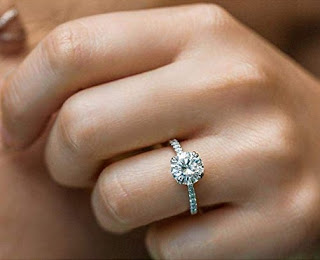In some cases, wedding quilts are handed-down, from one generation to the next. Traditionally, they were handmade by mothers and grandmothers for their children as wedding or anniversary gifts. A woman in my town who is now in her 90s, and a holocaust survivor, still makes wedding quilts for her great-grandchildren's special day. In her case, even thought each quilt is newly crafted, the story behind each one is multi-generational.
When you give a quilt as a gift, no matter who makes it, each quilt has a story. And whether handcrafted by a loved one, bought from a quilter and given with love, or passed down as an heirloom, traditionally, the wedding quilt symbolizes the shared life couples will enjoy.
Double wedding quilt pattern symbolism
The double wedding quilt pattern is the most popular choice as a wedding gift because it symbolizes love and romance, with interlocking rings that symbolize marriage. The symbolism is rich, but, as usual, the stories behind the origin are not in agreement.
The oldest symbolism suggests a link to the gimmal ring
(also known as gimmel or puzzle rings), with designs like clasped hands
incorporated into interlocking rings. These two rings were worn separately by
the man and woman during the engagement period as betrothal rings. When the
wedding day arrived, the interlocked rings became one ring, as the bride's
wedding ring. Gimmal rings were most popular in Germany and England in the
sixteenth and seventeenth centuries.
Another possible origin for the inspiration of the wedding quilt pattern is the Celtic Knot which has no start or finish. The knot represents eternity, and so the symbolism of the quilt is one of eternal love. However, in my opinion, the Celtic Knot is more complex than the traditional wedding quilt pattern.
Wedding quilt folklore
Like most wedding traditions, the wedding quilt comes complete with superstitious folklore. In this case, if the newlywed couple sleeps beneath the quilt:
- They will enjoy a blessed marriage
- Be protected from bad dreams
- Be protected from bad luck
Most newlyweds cherish a wedding quilt gift. Whether you put stock in the traditional symbolism or superstitions, remember that all symbolism starts somewhere. In this case, I'd say it starts with the one who makes the quilt and what inspires them to make it. This symbolism attaches to that unique quilt. Along with that, all wedding ring quilts represents the life the couple will share together and so the couple will add to the meaning of the quilt over time with their own story.
Thanks for reading. If you have a story about your wedding quilt, feel free to share it in the comments.
* * *
Some links in this post are affiliate links. We are a
participant in the Amazon Services LLC Associates Program, an affiliate
advertising program designed to provide a means for us to earn fees by linking
to amazon.com and affiliate sites.









